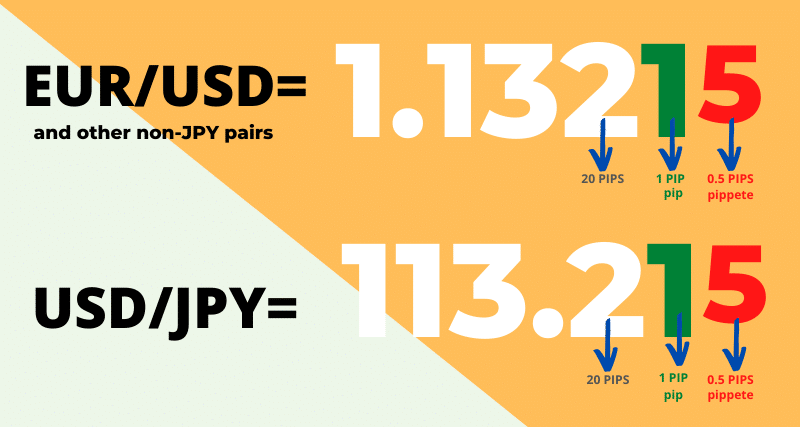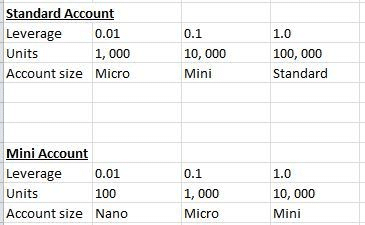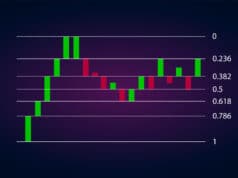For beginner and cautious traders, the ability to trade in small quantities is a big advantage. They can limit the risk probability and reduce money loss this way. Mini accounts form an effective solution for newbie’s and cautious traders. Let us delve into this Forex account, its features, benefits, and drawbacks here.
What Is a Forex Mini Account?

The usage of positions of reduced size also called mini lots in Forex is termed as a Forex mini account. The low quantity ensures a trader does not risk losing huge amounts during the process. Besides the mini size, there are two other categories in Forex, namely macro and standard accounts.
In mini lots, the minimum units of currency allowed are 10, 000, and for standard lots, it is 100,000 units. Since the amount used is minor, the pip movement is small, resulting in reduced rewards of about $1 compared to the $10 reward for a tick in the standard lot.
There are micro lots too, which are smaller accounts with a lot size of just 1000 units. And, a lot size of 100 units is used by some trading platforms, which are called nano lots.
Using a Forex Mini Account
For new traders, Forex market trading is an exciting opportunity offering lucrative profits. To ensure success, using a conservative approach initially is a wise move for beginners. This will help them gain better a perspective of the process without losing much of the hard-earned money. The mini account provides this opportunity for traders. However, there are certain important aspects you have to keep in mind while using this type of trading lot.
• The Amount of Money to Use
The minimum amount of cash needed for this account type can be as low as $100. But, to see decent gains and grasp the process better, it is recommended to use a minimum value of $500. One important fact to note in Forex is that a trader should not try too hard to see profits with each trade. This will only end in failure.
Having sufficient funds even if the amount is not huge will ensure you are able to experiment with new strategies and find one that works for you. By using the barest minimum, you can stay disciplined and allow the funds to accumulate. It is not wise to splurge on the amount, even if it is minimal.
• Live Trade Vs. Demo Trading

Using a demo account when you start trading helps to understand the process, implement the different strategies and price levels all under a live market environment. Since the account is free, this account category is beneficial.
But, with live trading, you need to employ some serious strategies as the risk is real here. With a demo account, even if you fail, there will not be any effect on your capital. But, with live trading, you have to use a proactive approach and look at taking proper positions.
• Limiting Risk
After acclimatizing with the trading process using the demo account, the first step into live trading is using a mini lot in Forex. This enables working in a real market environment where there is always a risk of losing money.
Since you are using only a minor amount due to small-sized trades, the loss is limited markedly than with the standard Forex account. Minimizing the risk helps in having a healthy account for a longer time. This will extend your trading time and make the process more effective and enjoyable.
• Pip

Currency pairs are used for trading in Forex with a specific spread value, like for instance, the EUR/USD pair has a spread amount of 1.1000. The basis of the process is betting on the alteration in the mutual relationship of currencies. The rate of change is called pip (percentage in point) movement.
For the pair EUR/USD, EUR is the base and it can fluctuate in relation to the quote currency, which is the US dollar. Here the quote rate has four decimals, while there are just two when JPY is used.
The change in the fourth place is the smallest change possible and occurs in cent fractions, hence the loss or gain is minimal. Hence, the base value used for trading has specific quantity limits, like 1000, 10000, etc.
The pip value depends on the currency pair used for trading and currency funding used for the account. For instance, if you trade with the USD as the base account funding and for quote currency, $10 is the value of a pip in standard, $1 for mini, and $0.01 for micro accounts.
Pros and Cons of a Forex Mini Account
Pros
- The trading is easy without much danger of money loss
- Helps beginners to practice and become experienced before using trades of bigger size
- Large investors, who want to diversify their investments, find it useful
Cons
- As with any other account, there is a risk present
- Huge profits cannot be made
Forex Mini Account vs. Standard Account

The mini and standard categories differ in many ways. With the standard account, you can trade with a minimum of $1000 to a maximum of $10,000. The initial funds’ value you deposit differs based on the broker.
Unlike mini accounts, the gains here are bigger as the deposit size and leverage enables bigger profits. Brokers also offer more advanced services for standard accounts, such as an educational system, professional Forex service access, bonuses, a dedicated manager, etc.
But, unlike mini accounts, the loss potential is more. The use of bigger deposit amounts and more leverage makes this ideal only for experienced and professional traders. The trading also is time-consuming and requires patience for getting good returns.
Conclusion
Mini accounts not only help beginners but also serve as testing tools for experienced traders to verify various trading methods. For traders who want to succeed in Forex, a mini account is a perfect place to start. It cuts down the losses as you gain solid ground. Experts too can mitigate risks with this account type than with other accounts.




